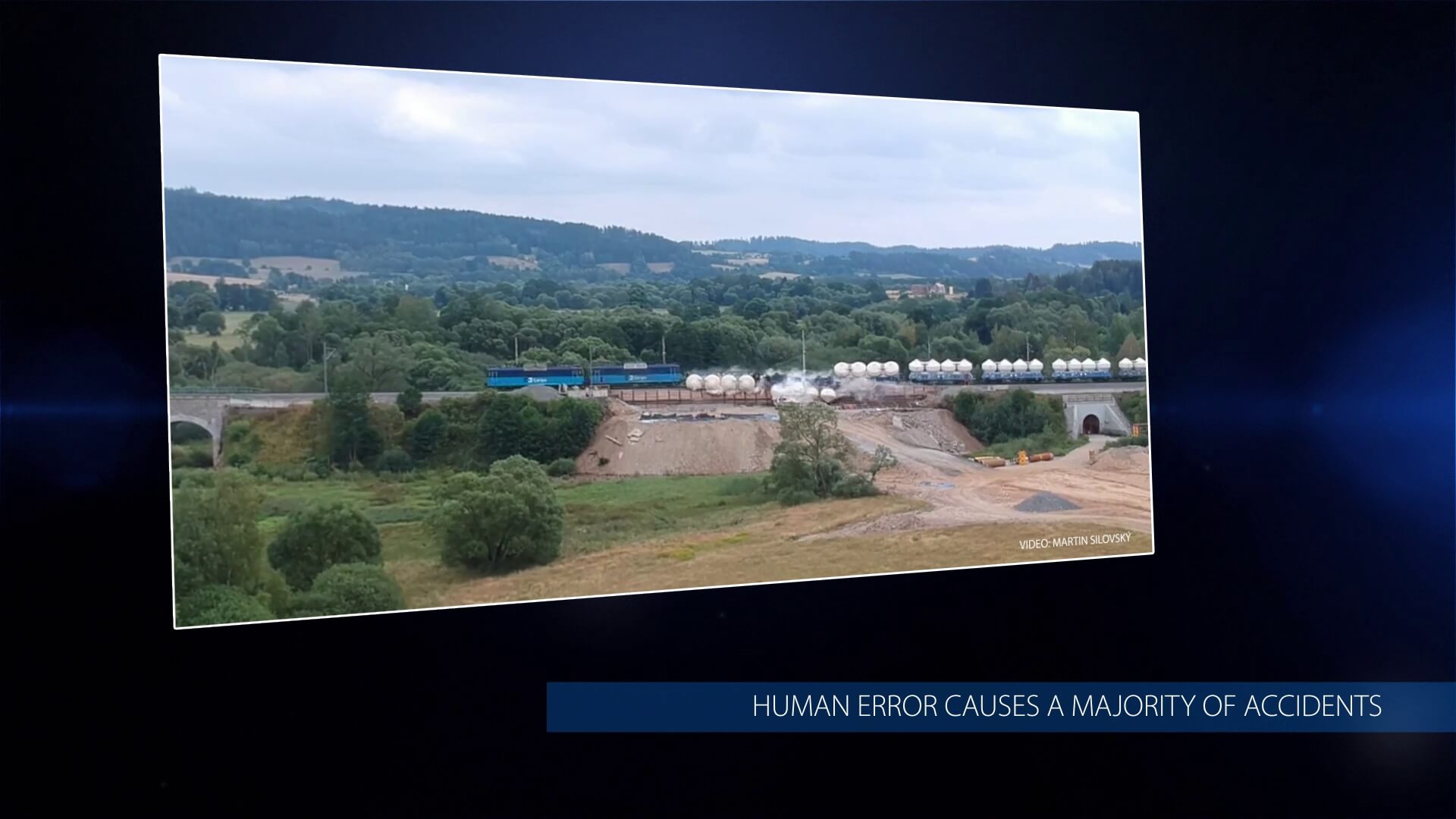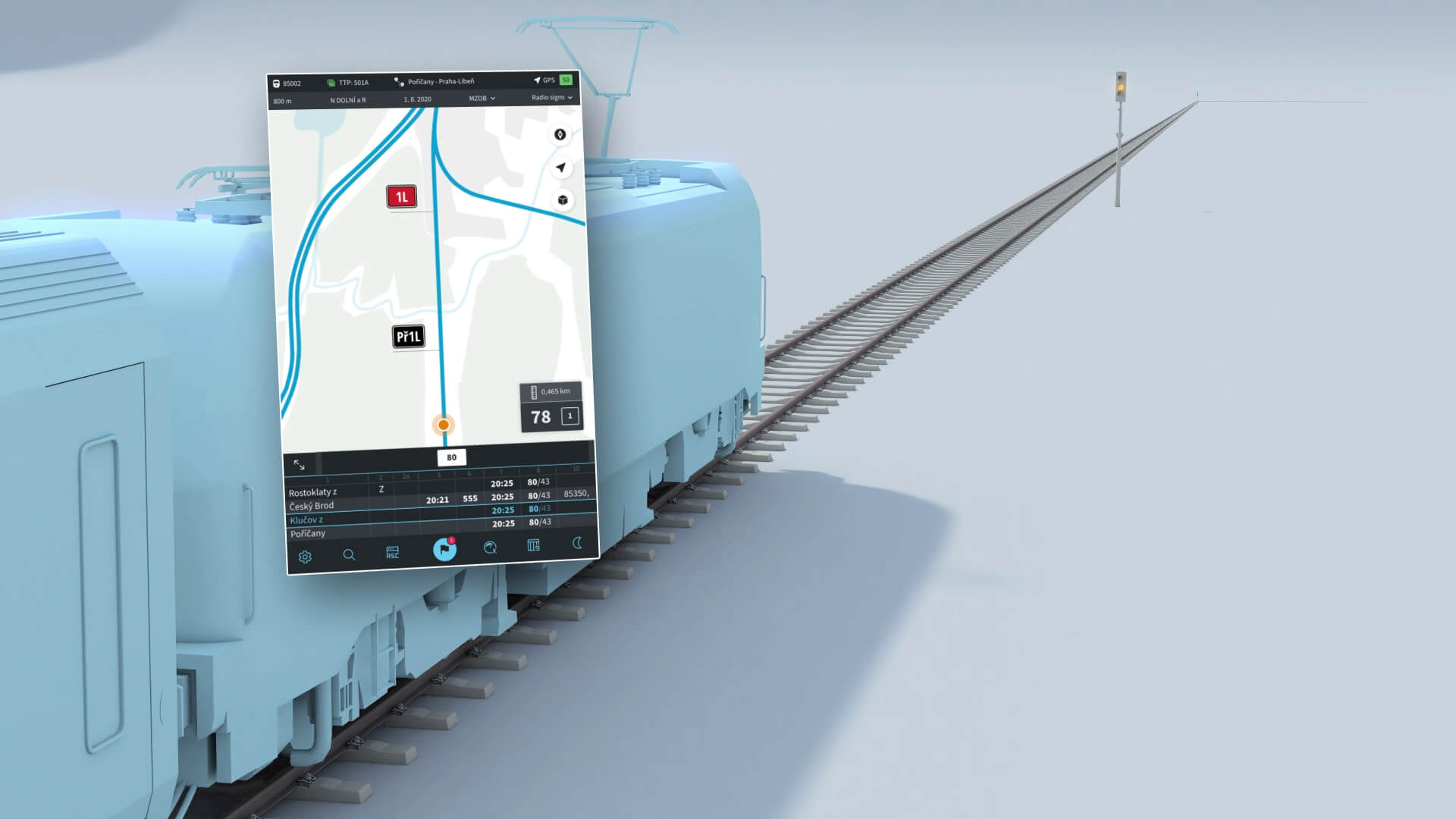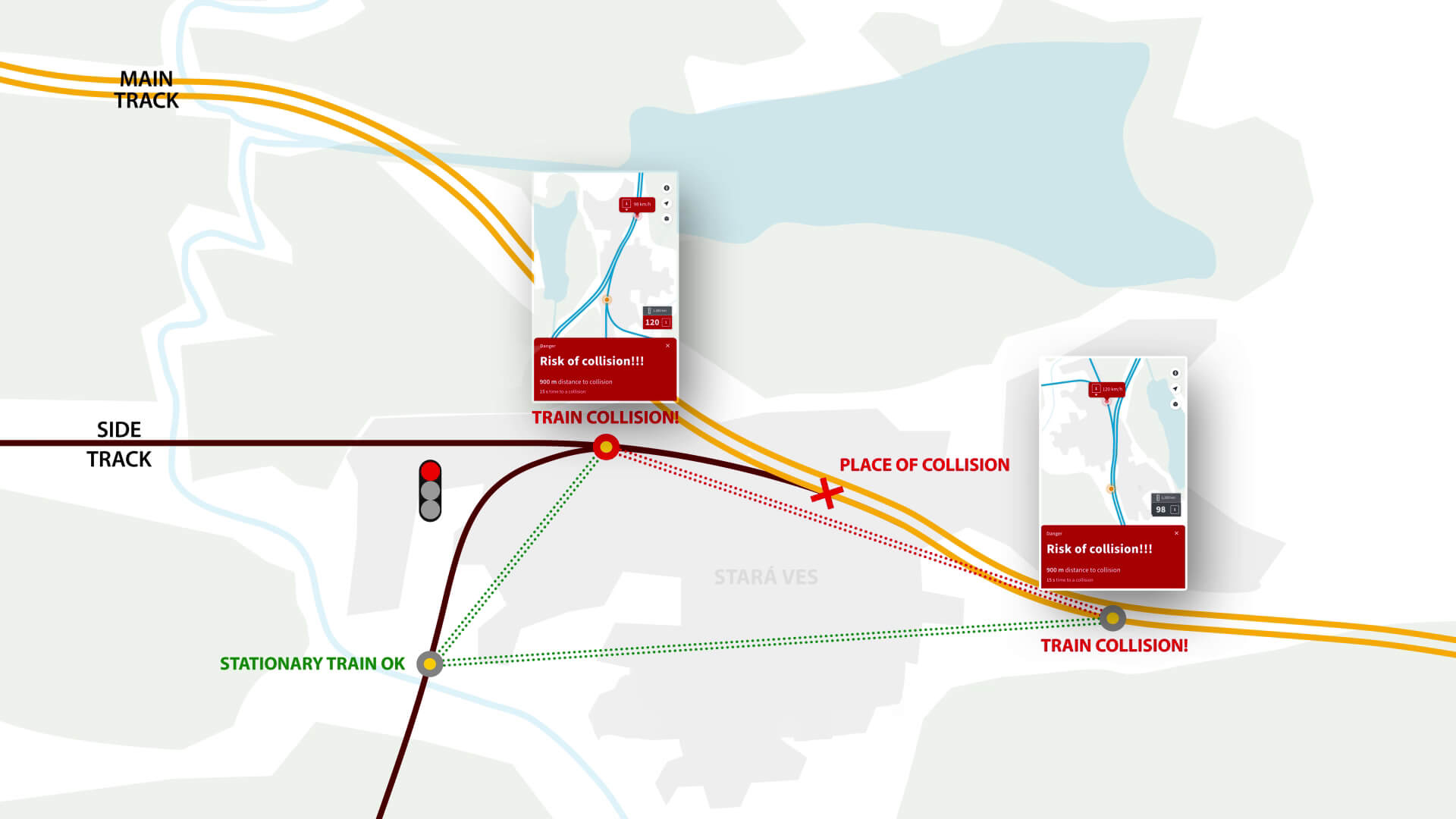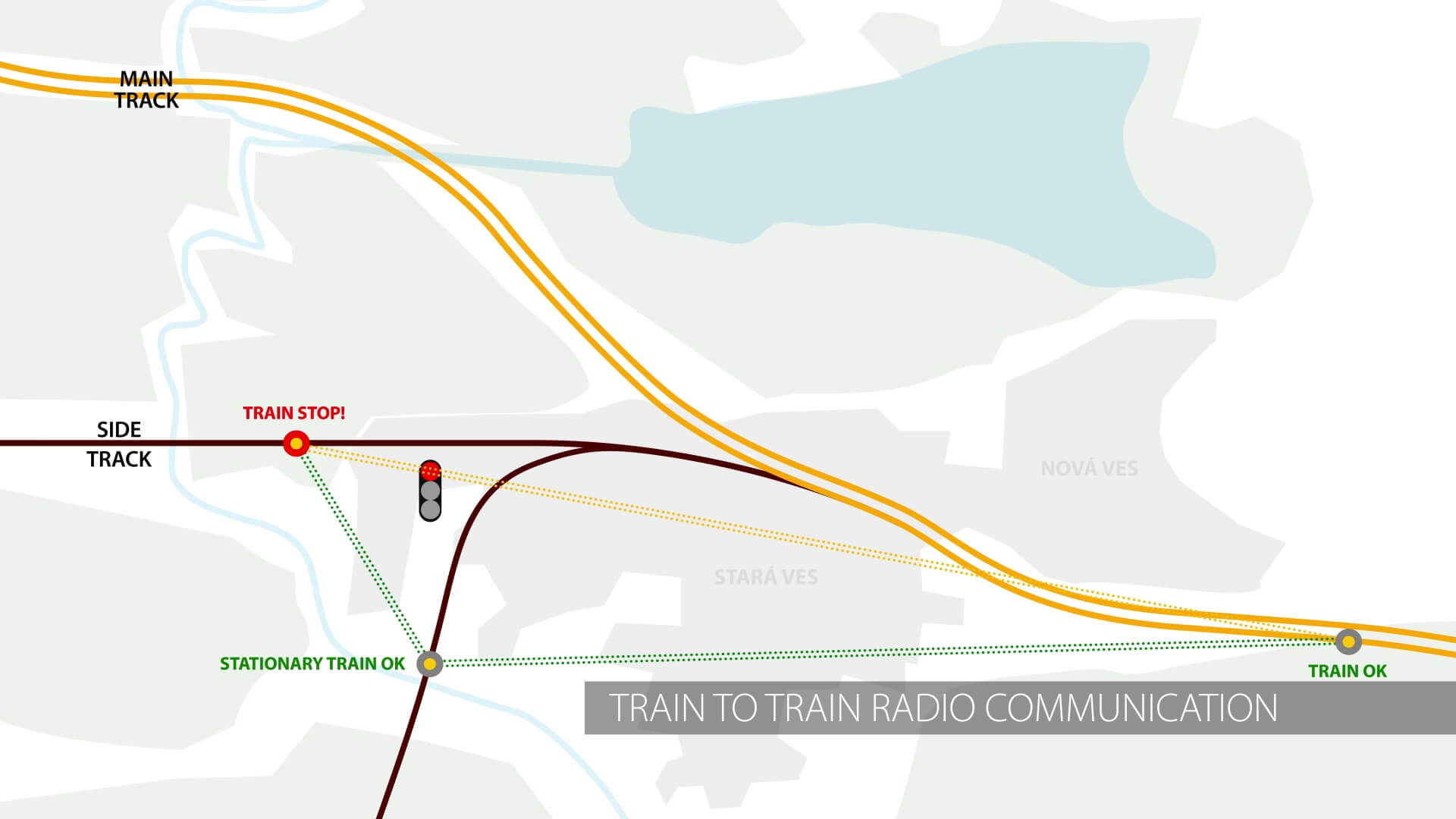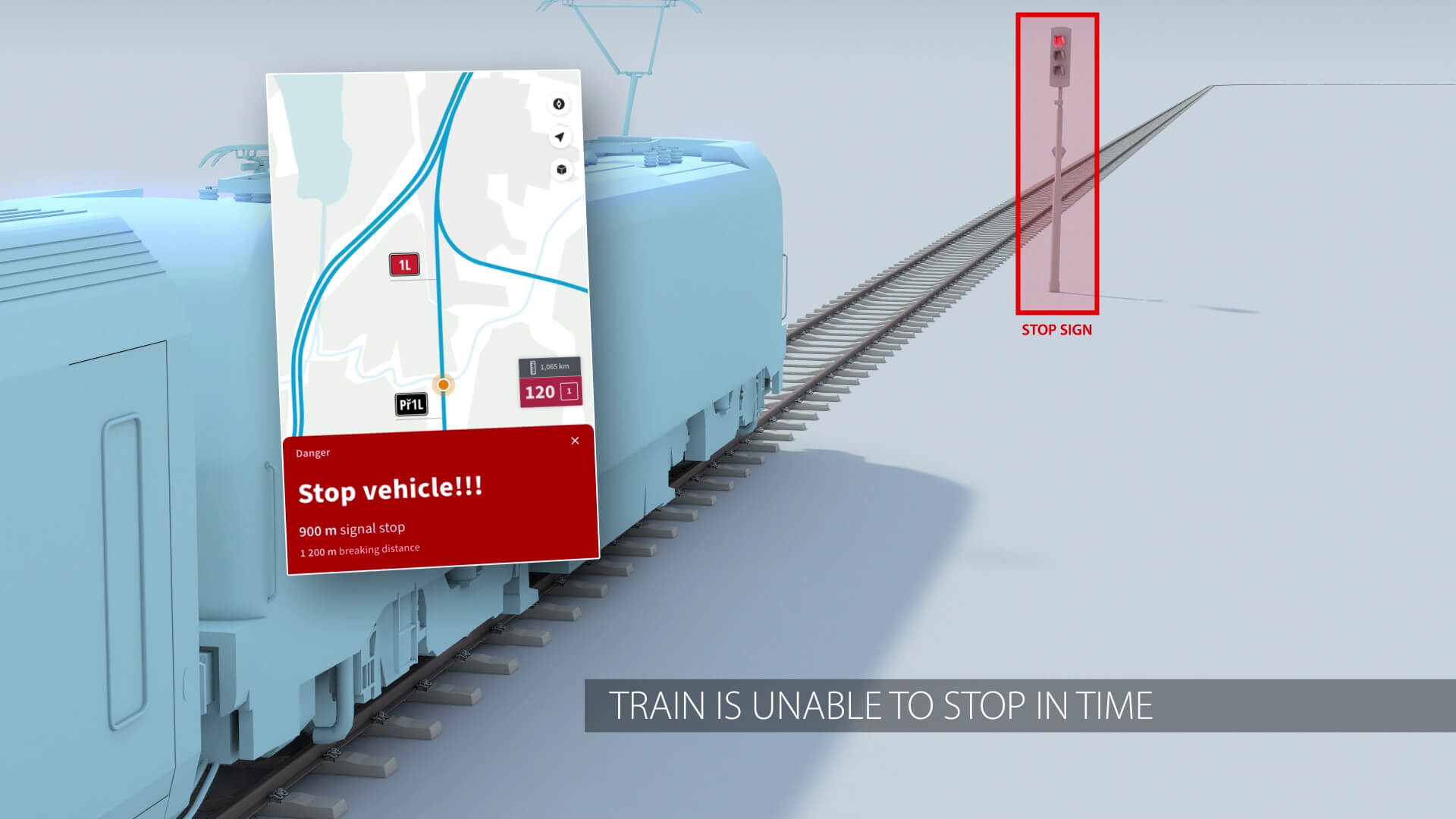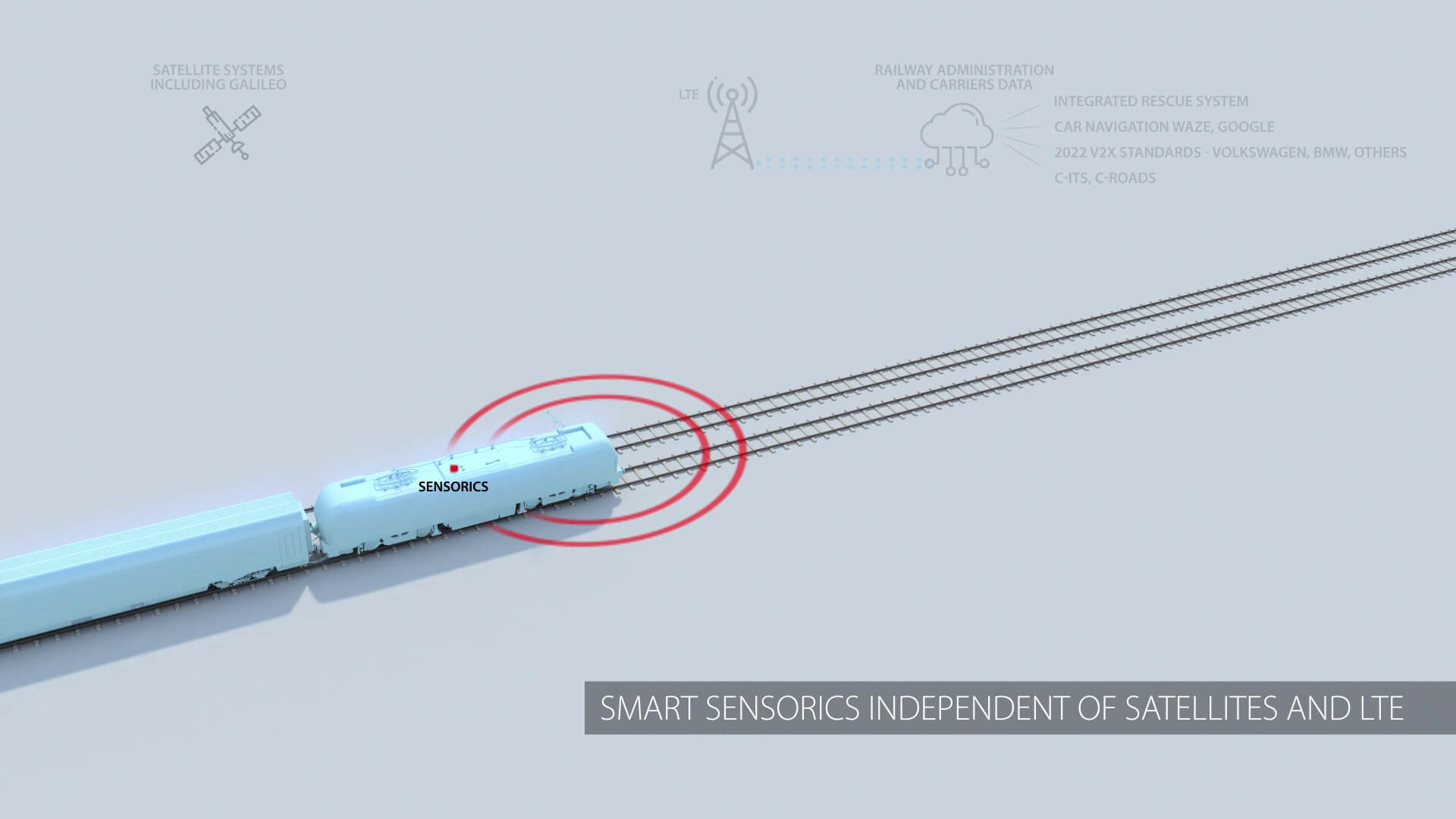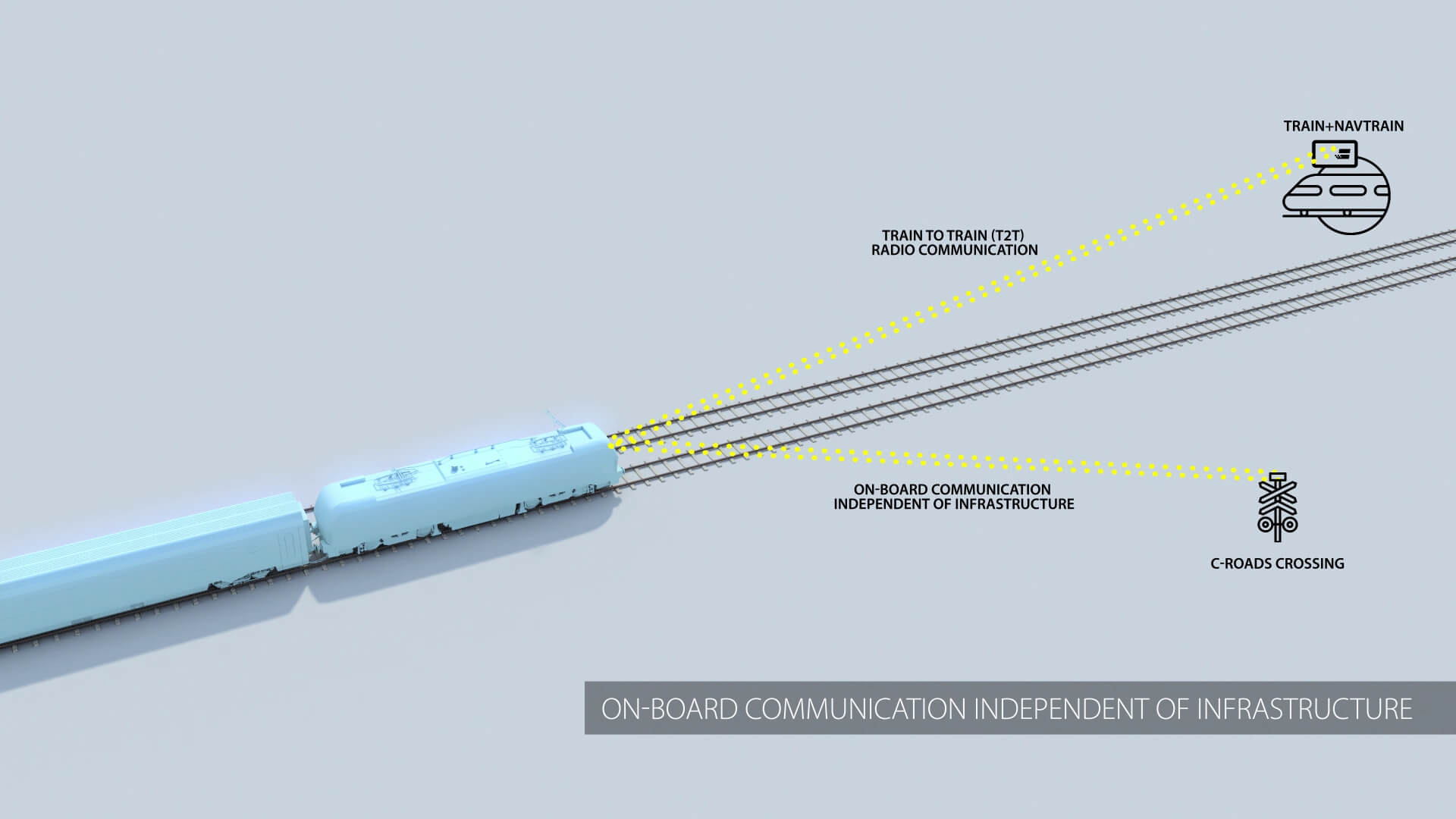Operating scenarios
Importance of RCAS NavAlarm
to prevent incidents and minimize the consequences of unavoidable accidents
Despite the undeniable quality of the primary security of trains, tragedies occur even on the safest lines.
NavAlarm is a purely Czech anti-collision system. In the world, Similar systems are referred to as RCAS (Railway Collision Avoidance System), derived from the aviation TCAS (Traffic Collision …).
NavAlarm is simply a set of algorithms that work thanks to the precise NavCom location and communication unit and the NavTrain display application. This trio of products is the heart and brain of the whole system.
NavAlarm does not replace the primary security device, but serves in combination with it as an independent additional secondary security. It focuses on detecting human errors and shortcomings of primary security. The logic of independent secondary security is considered an important security element wherever human safety comes first.
RCAS in standard operation
is completely unattended, does not attract the attention of the driver
NavAlarm RCAS is integrated into the tablet that the driver is used to. Optimally as part of the NavTrain assistant, which the driver uses for every ride. Today, a third of train drivers already use the NavTrain application in ČD Cargo, and the plan is to deploy the application for train drivers in 2022 for passenger transport drivers as well. The Czech Railways group would thus cover over 90% of all journeys in the Czech Republic. Other carriers want to test the system. This would lead to the necessary expansion, which would be able to eliminate most accidents in the Czech Republic.
During normal operation, NavAlarm works completely in the background and does not interfere with the driver. The station is not equipped with any other new display. The system continuously acquires position data from a precise NavCom multisensor satellite positioning unit with intelligent algorithms. It also has high-end antennas. LTE covers up to 98% of the territory of the Czech Republic, which practically means covering the vast majority of trains that can warn of an imminent accident. LTE can be replaced, for example, by the forthcoming FRMSC railway communication, as the 25-year-old GSM-R does not have sufficient transmission capacity and does not cover sufficient territory.
Even in the event of a complete LTE outage, there is an independent train-to-train radio communication. Thanks to the integrated logic, it is completely independent of the GNSS, LTE and GSM-R navigation and communication signals during its own emergency. This means that it works, for example, in tunnels. Although RCAS does not replace the primary train protection system, it can still prevent most accidents, or at least reduce their consequences.
Accident prevention
first of all for unsecured monorails
The development of an incident into an emergency, which eventually leads to a tragic accident, impends, for example, if, due to human error, the driver passes a stop signal.
On a single-track line, RCAS operates independently of the railway infrastructure data provided. Trains know everything they need to know and warn drivers in time. Logic handles false alarms where trains pass or run close to other tracks. After certification in real operation, the RCAS can be supplemented with the possibility to stop the train. RCAS NavAlarm can operate on monorails within two years throughout the Czech Republic.
Deployment on multi-track lines
is possible with data from infrastructure administration
There are a number of incidents where a STOP signal is passed on an unsecured line at the point where it enters a fully secured railway corridor. It’s just a matter of chance when a conflicting monorail train enters the track of a passing express train. If it runs on the engine, it cannot be stopped even by the so-called general stop switching off the electricity.
The extension of RCAS to the whole rail network depends on providing the state-owned data. According to the European Commission’s Data Act of 22 February 2022, railway infrastructure managers should provide this data paid for with taxpayers’ money. This will allow the development of many important applications that are common and very effective in other fields. One of them is the economical and rapid introduction of additional train protection where ETCS primary interlocks will not be installed in the coming decades.
In the Czech Republic, the speed of the deployment of supplementary security depends on the political will and speed of state-owned companies. Technologies are already available today, their adaptation to the conditions of the Czech railways is not hindered by any technical obstacles. By the end of 2023, most unsecured lines could be covered and, thanks to RCAS, accidents and emergencies will decrease.
The Czech Railways is at the very beginning. If it does not waste the chance to digitize the railways and support the emergence of competition in the rail market, it has a chance to become a pioneer of these modern technologies throughout Europe. As a first step, the Railway Administration began providing information about lines and timetables to carriers electronically in 2021. We are currently negotiating to provide additional data to companies that have the necessary digitization know – how, which will enable the extension of RCAS to all types of lines and the deployment of much – needed accesible technologies on the railway, which is a promising and sustainable transport system for Europe.
Fast driving warning
prevents the situation developing into an incident
Every accident is the result of successive emergencies. Fast driving is often the initiator and at the same time it is easy to point it out.
Drivers use speeding warnings in car navigation. This basic tool is not available on trains. Unlike in cars, it’s not about the indiscipline of speeding drivers, but line speeds change very often, even while driving. All you have to do is divert your attention to unruly people or vehicles on the track, call from the dispatcher, retune the radio and you’re just not sure how fast you should be going. And that’s why NavAlarm is here.
Prevention of passing the STOP signal
RCAS alerts will give you a chance to stop sooner
It is every driver’s nightmare to pass a traffic ban sign. During the most recent accidents and most incidents, driver’s medical condition was never to blame. Let’s help him with a technique commonly available to drivers of cars, planes or recreational yachts.
Accurate satellite navigation of the position and determination of speed projected on digital maps will provide sufficient information to warn of impending transit of a Stop sign with high accuracy and a minimum of false alarms. During use, similar systems learn and further improve. It brings very good results.
Satellite navigation failure
not a problem as well as driving through a tunnel
The Navcom location unit is the heart of the NavAlarm system. It has multiple sensors and doesn’t just rely on satellite signal.
In the event of a satellite signal failure, the exact position is determined by several other independent sensors. Aircraft use the same technology for fully automatic landings in three-dimensional space. Railway applications are significantly simpler due to the restriction to the two-dimensional track. Therefore, the failure of the GNSS satellite signal does not affect the function and security of the system.
LTE communication failure
short-term outages are a major problem
The trains communicate their position and the running track simultaneously via LTE (or FRMCS) and via a special radio modem directly to each other.
Therefore, in the event of an LTE failure, the safety function is not compromised and the system can still indicate a potential imminent collision. The train data (TJŘ, TTP,…) is also downloaded by the train (driver) before the journey, so that from the functional point of view the failure of the LTE signal has no effect on the operation.
Development in cooperation with

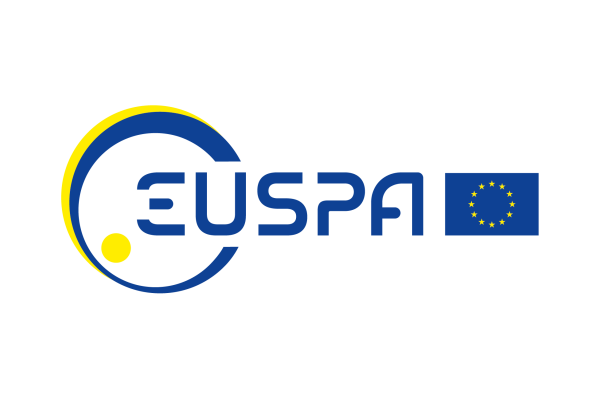

We design the function in cooperation with members of the Federation of Train Drivers of the Czech Republic

